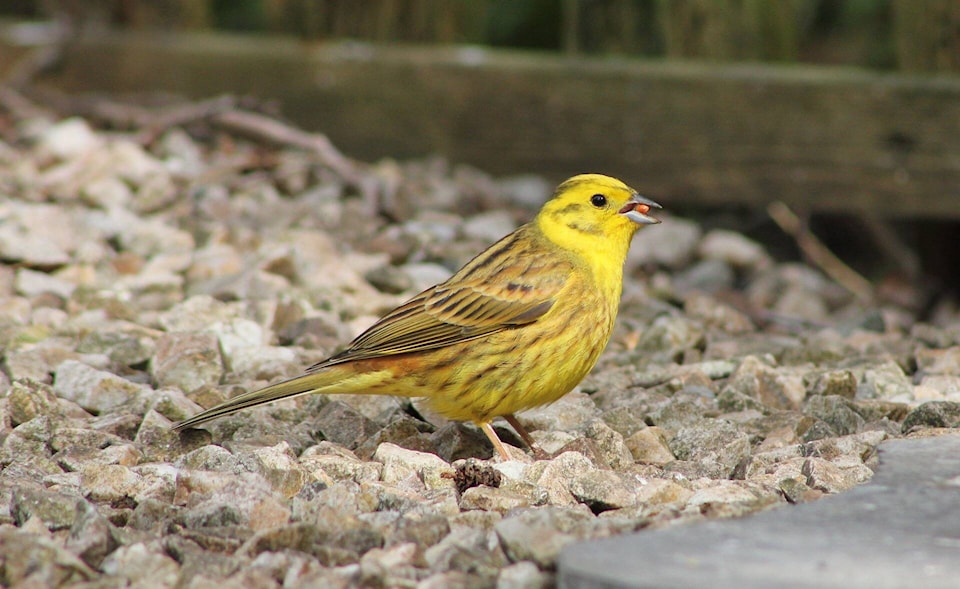By Ed McMackin, a biologist by training and a naturalist by nature
It happens, once in awhile, that two different birds might have the same name. Of course, it happens with common names and not with scientific names. For example in England, there is a “robin” and in North America there is a “robin”. They are quite different birds, different size and different coloration. That’s only the start of the list of differences. The two robins are distinguished by added names, ending up as English Robin and American Robin.
In New Zealand, and in other parts “down under”, there is a bird called the “Yellow Hammer”. It’s a smallish bird, boasting a length of about five inches and is usually found at the base of thick scrub on farmland. This member of the Bunting Family feeds primarily on seeds of grasses and grains. It feeds primarily on the ground, the only habit it has in common with the other bird with the same name.
The Yellow Hammers from down under also nest on or near the ground weaving a cup of fine, dry, materials to give protection to the eggs and young The nest is also located in a tuft of grass that gives added protection to the nestlings. This bird goes by the scientific name of Emberiza citrinella and was introduced to Australia from Eurasia. It doesn’t likely occur in North America but the other bird with the same name, Yellow Hammer, does.
The other Yellow Hammer inhabits eastern North America, Canada, and the United States. Their range extends over to the southwest. Its length is twice that of the Yellow Hammer of New Zealand and Australia. The Yellow Hammer from eastern North America often feeds on the ground, going after ants and digging holes in ant nests to find more ants and pre-adult ant-forms.
It belongs in the Woodpecker family and nests in tree-holes made by themselves and other woodpeckers. They also go by the more common name of Yellow-shafted Flicker, which is now regarded as a race of the Northern Flicker, as is also the Red-shafted Flicker, found primarily in Western North America. On the plains, the two races of yellow shafted and red-shafted appear to interbreed.
Why the Yellow Hammer of New Zealand and thereabouts was given that name I don’t know. But the Yellow Hammer of eastern Canada got that name because it flashed a bright yellow as it flew and hammered on a dried tree branch to announce its territory, to call a potential mate, or to just say, “I’m here”. That rapping sound is a common spring event. Perhaps New Zealand’s Yellow Hammer, which is bright yellow, also hammered on something.
The chances of Emberiza citrinella showing up by natural means in the Kootenay Lake-Creston area are pretty slim. But the Yellow Hammer, Yellow-shafted Flicker, has very rarely shown up in the East Kootenays. A dead one has been found near Creston, which may have dropped from the front of a vehicle that had travelled on the prairies.
